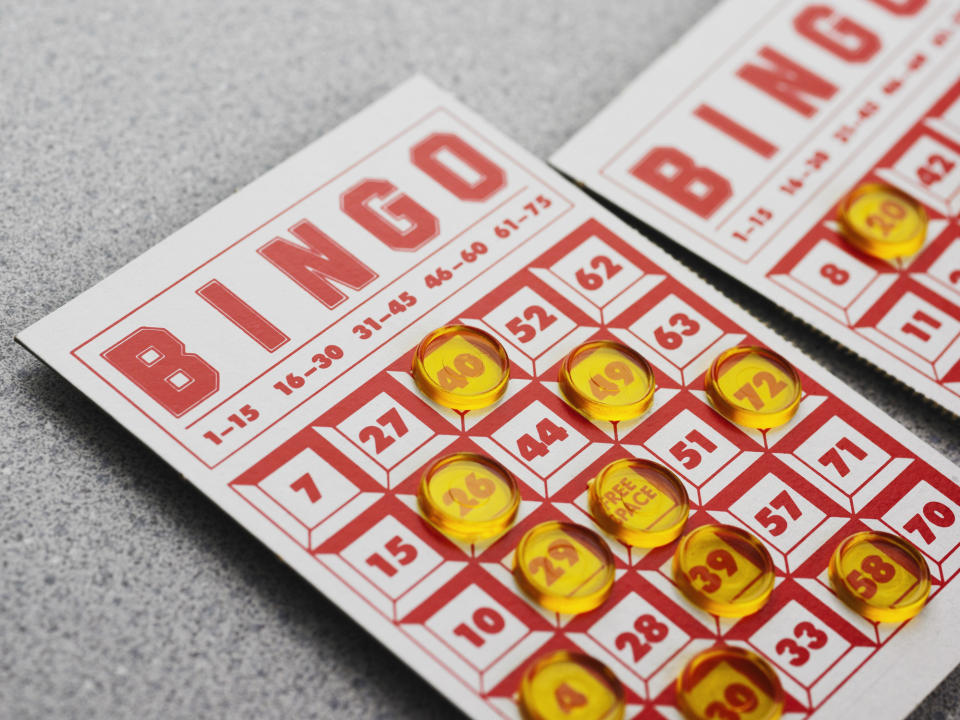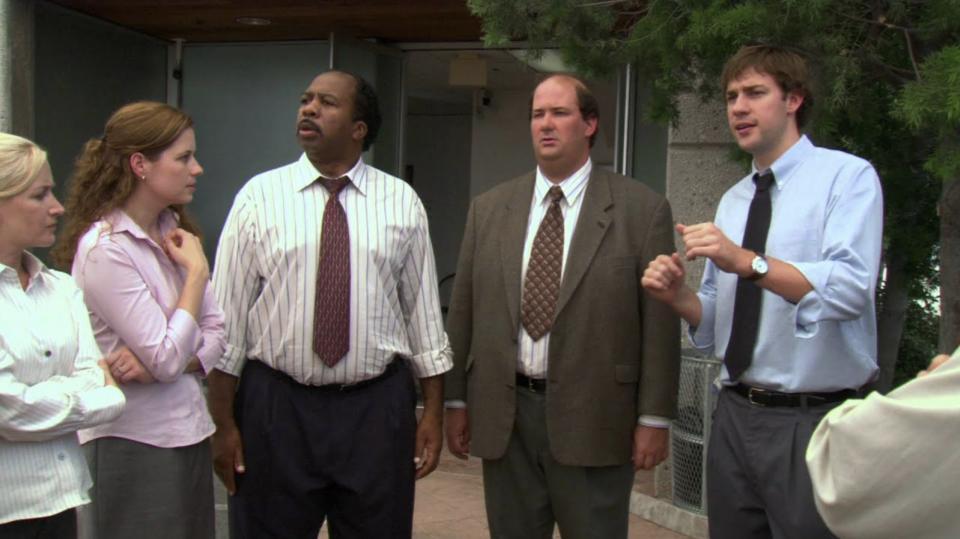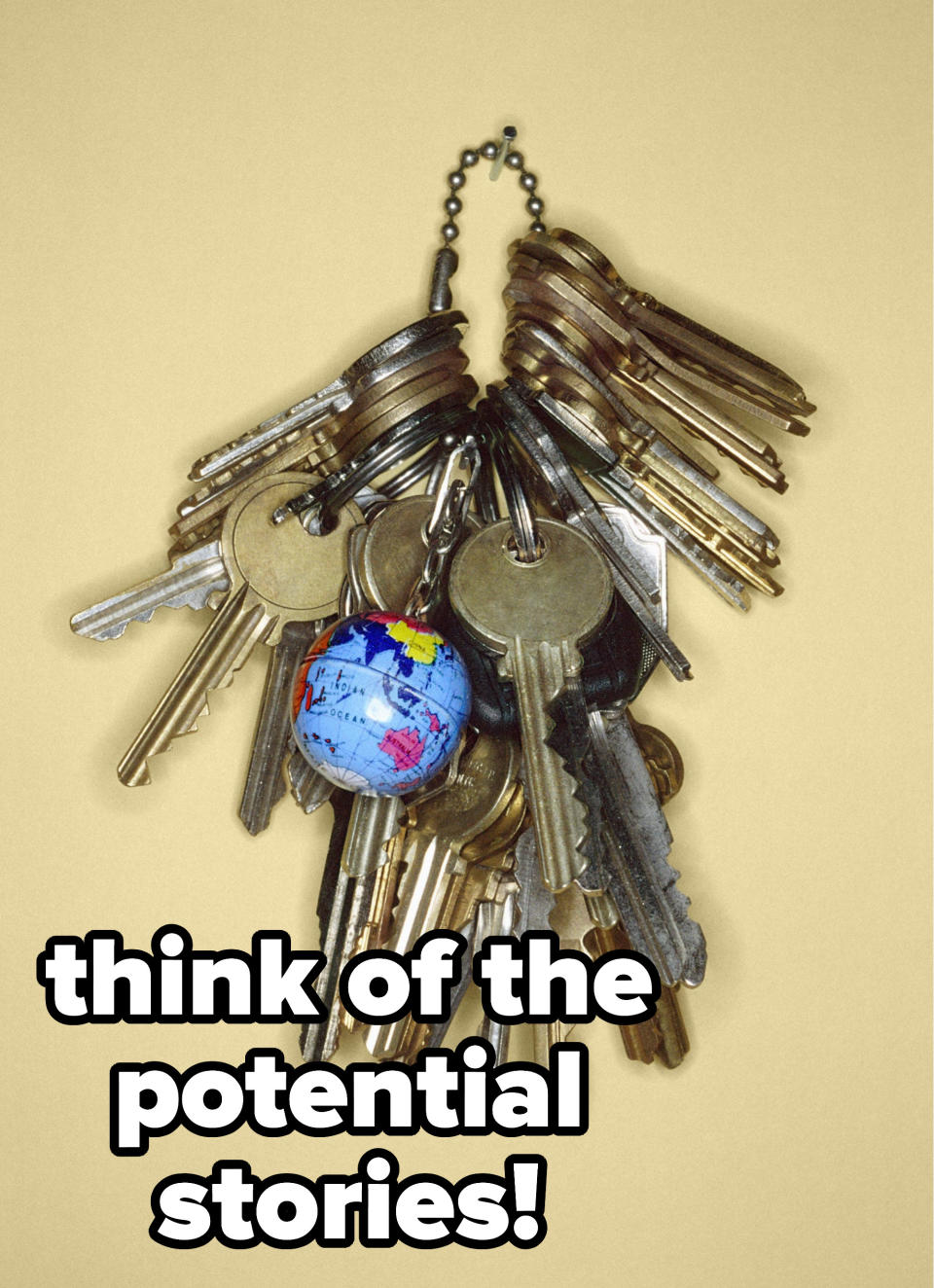25 Icebreaker Games That Work Well In Any Setting
Breaking the ice is hard. How do you make conversation with someone you don't know without falling into the pits of inane small talk?
HBO
Whether it's small or large groups, failing to spark up some dialogue could lead to the worst thing of all: an awkward silence that goes on for too long.
NBC
With that in mind, here are some excellent ice breakers for the next time you find yourself tempted to talk about the weather:
1.Play icebreaker bingo

It's exactly like regular bingo, except that the squares are full of questions or personal details relating to the players. There are lots of templates available online, or you can just make your own.
2.Answer unique icebreaker questions and explain your answers.
You can pull questions out of an envelope at random or simply go down the list!
3.Go around the group and share your achievements from before you were 18.
This is a fun way to learn about people's childhood hobbies and is likely to prompt some interesting stories.
4.Take a personality quiz and compare your results.
You know where to find 'em, wink wink.
5.Have everyone write down a statement or story about themselves and put it in a bowl (or any other container). Pull out pieces of paper one by one and guess who they're about.
6.Play Tyrion's drinking game from Game of Thrones.
HBO
Tyrion played this game for the first time in Season 1, and it's kind of similar to Never Have I Ever. But instead of making a statement about yourself, you try to make a true statement about someone else in the group.
Instructions:
1. In a circle or around a table, the first person tries to make a correct assumption about someone else in the group. Ex: "You're an only child."
2. If your statement turns out to be true, the person you said it about has to drink, and you get to make another statement.
3. If you're wrong, you have to drink, and the next person in the group makes a statement.
7.Play Would You Rather
Would You Rather is an especially great icebreaker because the questions can cover lots of topics like travel, food, and dating. By the end of the game, you'll not only know people better, but hopefully you'll have found something in common with a few people.
8.Play Two Truths and a Lie
You can't go wrong with a classic.
9.Give everyone in the group a few minutes to write a six-word memoir about their life.
Once time is up, everyone reads their memoir out loud.
10.Split the group into pairs and do several rounds of speed dating.
11.Play Jim's desert island game from The Office.

The characters on the show discussed what five movies they'd want to have with them on a desert island, but you can expand the discussion to include other things too.
12.Give everyone a few minutes to find an embarrassing picture of themselves and share it with the group.
Mutual embarrassment, the great unifier.
13.Ask each person to reveal their four C's: a cartoon character, a car, a color, and a type of cuisine that best describe their personality.
14.Go around the group and reveal your rose, thorn, and bud for the week.
Your rose is something positive that happened during your week, a thorn is something negative or challenging, and a bud something that you're looking forward to.
15.Attempt the marshmallow challenge.
16.Make a mixtape with the group.
Pick a genre of music, and then give everyone a few minutes to choose their favorite song from that genre. Have someone compile a playlist with all the songs before moving on to the next genre. Once you're done, share the playlist with everyone in the group.
17.As a group, find 10 things in common you all share.
This could take a while depending on who's in your group, so you'll feel much closer to everyone at the end of the game.
18.Hold a Rock Paper Scissors tournament.
You can make a bracket and even have small prizes so everyone gets more invested.
19.Have a show and tell session.
Yes, you're a grown up, but you are not too old for this.
20.Go around the group and have everyone explain the keys on their keychains.

Everyone explains each of the keys on their keychain, which will give everyone a chance to talk about where they live and what their typical day looks like.
21.Play a few rounds of What's My Name?
This game is something like Charades, but you ask yes or no questions instead of acting out the answers.
Instructions:
1. Each person or group writes down names of different famous people on individual pieces of paper.
2. Switch lists with another player or group so that everyone has names written by someone else.
3. One by one, hold up a piece of paper to your forehead and ask the group yes or no questions to figure out whose name you're holding.
Examples of questions:
"Am I a real person?"
"Am I alive/dead?"
"Am I an actor/singer/influencer?"
You can also play with other categories like countries, food, or movies.
22.Without speaking, try to line up according to different characteristics.
Start with easy ones like alphabetical order by first name, height, and age. Then, you can move on to harder ones like who has the most Instagram followers or contact numbers in their phone.
23.Play a verbal version of Categories.
Instructions:
1. Pick a category (countries, food, animals, etc.) and a letter of the alphabet. For example: animals and the letter C.
2. The first player names an animal that starts with the letter C, and the person must then name an animal beginning with the last letter of the word the previous person used. So if the first person said cat, the second person might say turtle, and the third person could say the eagle.
3. Words can’t be repeated, so the game will get harder as you take turns going around the group. Each round stops when someone repeats a word or takes longer than five seconds to say something.
24.Play a few rounds of Psychiatrist, letting everyone take a turn as the titular character.
Instructions:
1. Pick one person to be the psychiatrist. The psychiatrist has to leave the room so that they can't hear or see the rest of the group, aka the patients.
2. The patients have to decide on a secret ~symptom~ which every patient will pretend to have.
3. Once the patients have agreed on a symptom, the psychiatrist can come back into the room.
4. The psychiatrist must then question the patients freely, trying to figure out the correct diagnosis. Once they do, someone else becomes the psychiatrist, and the group chooses a new symptom.
Examples of "symptoms":
-Pretending to be the person sitting to their left
-Pretending to be a '90s celebrity
-Pretending to be a cartoon character
Instead of answering the questions as themselves, the player would answer as whoever or whatever they're pretending to be.
Examples of questions the psychiatrist might ask:
"What is your name?"
"Are you a real person?"
"What do you do for a living?"
25.Get ooky and spooky with a game of Addams Family.
ABC
This game is especially good for inducting new people into a group.
Instructions:
1. The new members step out of the room and wait to be called in one by one by the other group members, aka the Addams Family.
2. The Addams Family calls one of the new members to stand in the middle of the circle and sing the Addams Family theme tune, complete with synchronized snapping. One person says, "You must perform until we applaud."
3. The new member does whatever they think will make the Addams clap, while the Addams physically copy whatever they are doing. If person in the middle starts telling a story/joke or singing, the Addams will only copy their physical gestures, not talk/sing along with them. The copying should start out subtle, then grow more exaggerated as the game goes on.
4. The game ends when the person in the middle claps so the Addams copy them.

